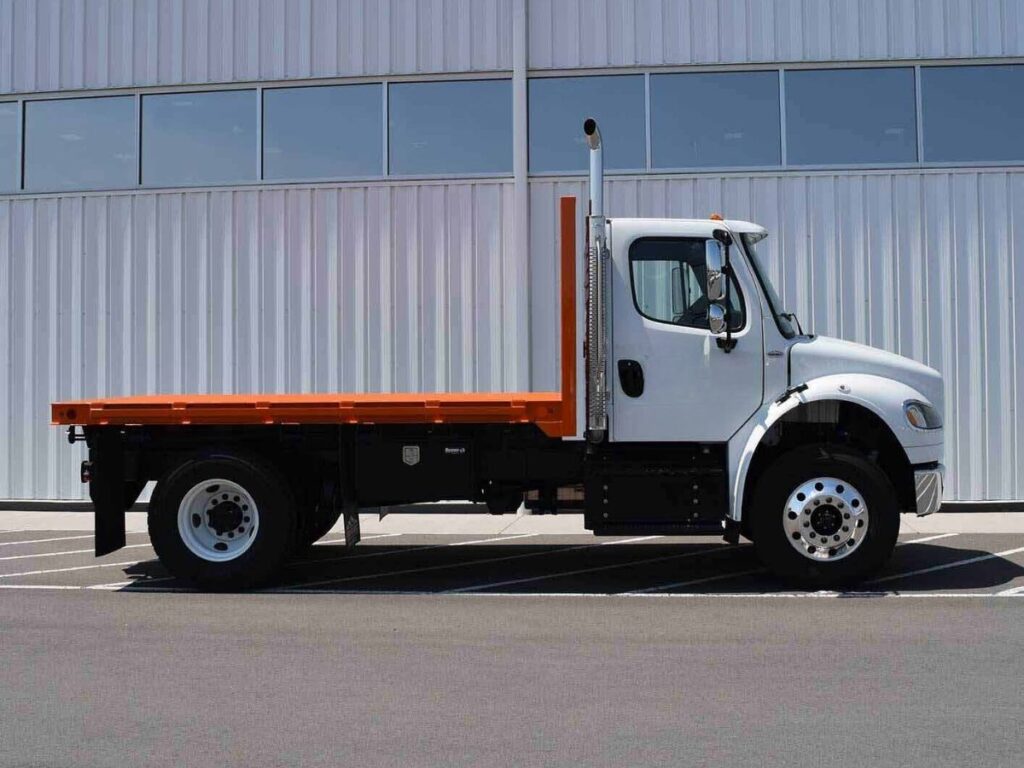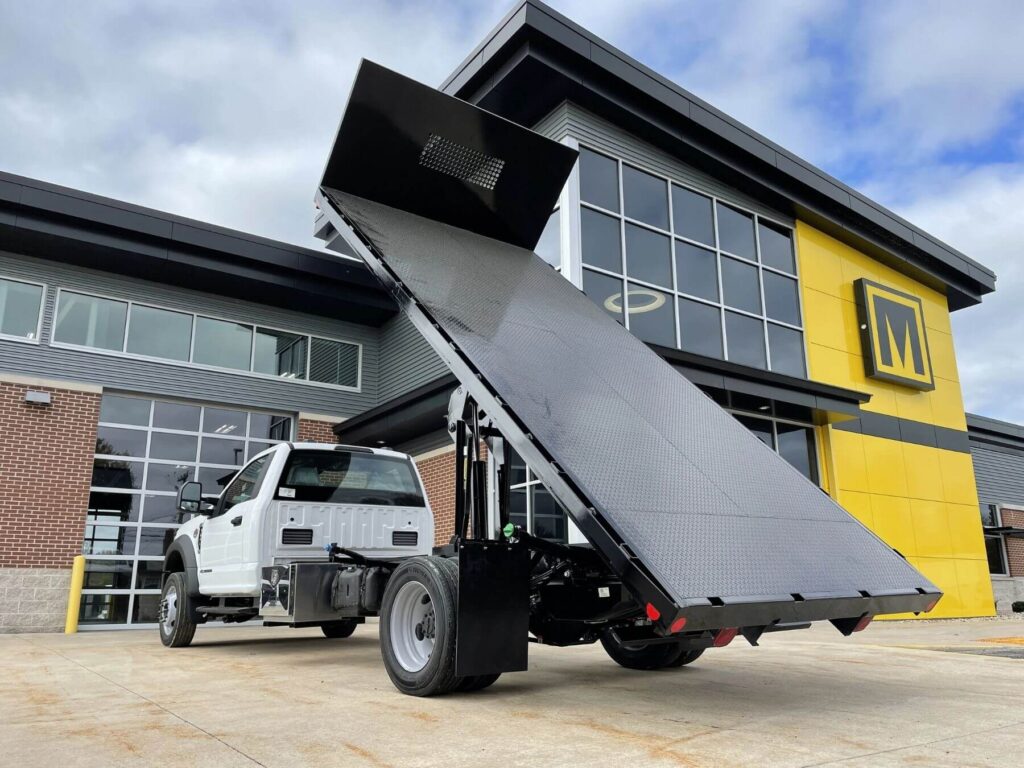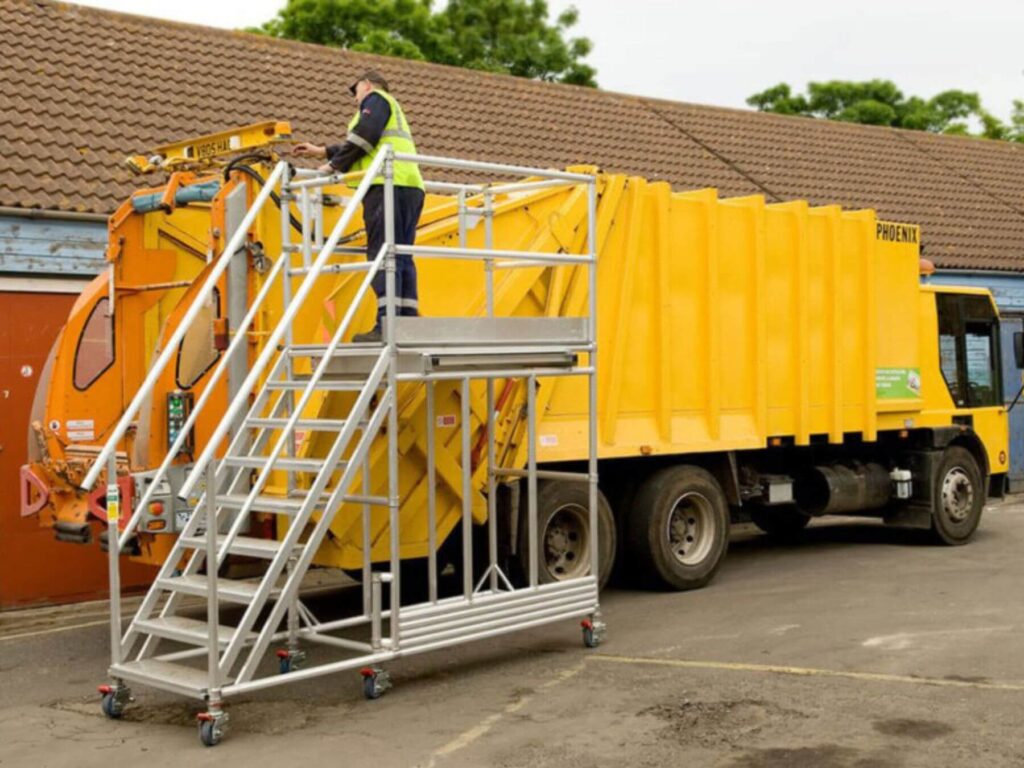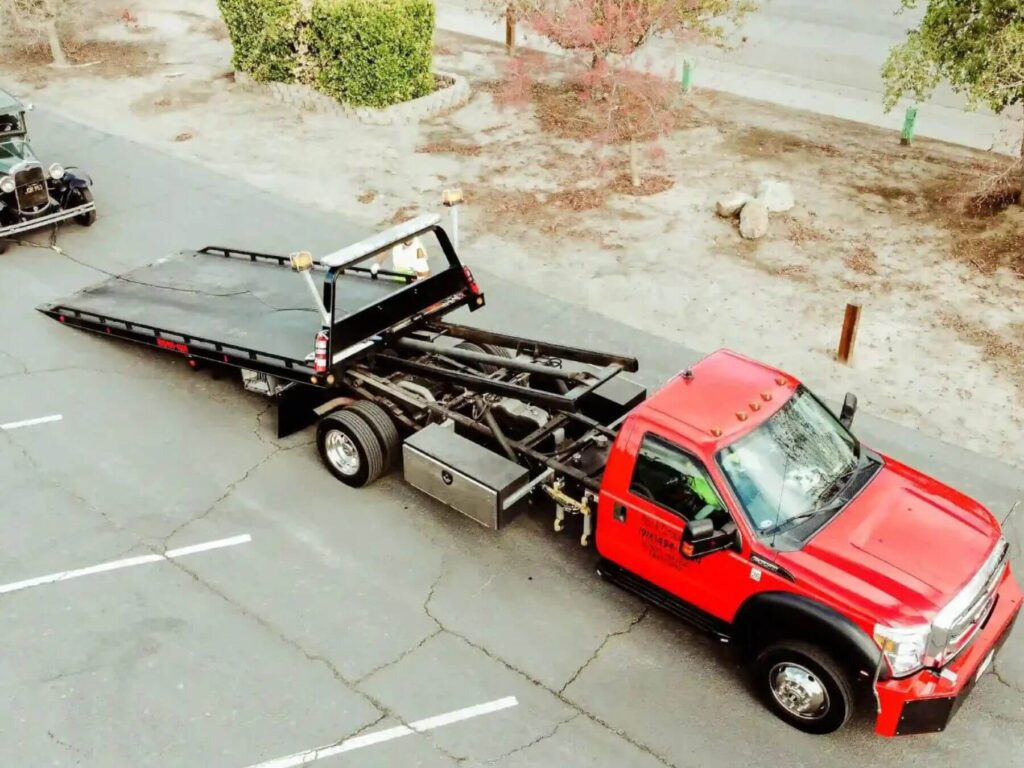Back when I was helping a small business set up its warehouse, we spent hours manually shifting supplies. One platform truck changed everything.
That moment stuck with me how one simple tool could boost speed and cut down injuries.
I’ve helped dozens of businesses improve internal transport using reliable, cost-effective solutions. This review is based on what I’ve seen work, up close and in action.
You’ll learn what a platform truck is, how it functions, and what features matter most depending on your operation size and floor layout. If you’re trying to improve workflow, you’re in the right place.
Let’s get into it!
1. What is a Platform Truck?
A platform truck is a flat, wheeled cart used for moving heavy or bulky items. It usually features a sturdy deck, a handle for pushing or pulling, and four wheels for stability. These trucks are built for function. They are not designed to look impressive. They are designed to make your operation run smoother.
Platform trucks are used across a wide range of industries, from manufacturing to retail. Their job is to reduce manual lifting, save time, and protect goods during internal transport. For many businesses, especially those with recurring material handling needs, they become essential tools.
If your team still relies on makeshift solutions to move stock, equipment, or supplies, it may be time to consider the role a platform truck can play. It is not the flashiest investment. But it is one of the most practical.

2. Benefits of Using a Platform Truck
I’ve seen firsthand how quickly things change once a platform truck is introduced into a busy workspace. What seemed like minor inefficiencies quickly added up, costing both time and effort. The benefits of using one go well beyond simply moving items from one place to another.
Improved Efficiency
One of the first things teams notice is how much faster tasks get done. With a platform truck, staff can move more items in fewer trips, reducing back-and-forth movement across large areas. This adds up over the course of a day or week, saving several labor hours. It also frees up team members to focus on higher-priority tasks.
Reduced Risk of Injury
Manual lifting remains a leading cause of workplace injuries, particularly in environments where frequent stock handling is common. Platform trucks reduce the need for repetitive bending and carrying, which lowers the risk of strain and accidents. They’re especially helpful for employees handling awkward or heavy items regularly. Fewer injuries mean fewer disruptions and a healthier work environment.
Versatility Across Departments
Platform trucks are not limited to one type of use. I’ve seen them just as helpful in small office supply rooms as in large-scale production areas. Whether it’s maintenance, IT, shipping, or janitorial work, they adapt to different departments with ease. Their simple design makes them practical across multiple workflows.
Increased Load Stability
Unlike lighter carts or makeshift solutions, platform trucks offer a solid, balanced base for transporting goods. With features like side rails or non-slip surfaces, loads are far less likely to shift or fall during transit. This is especially important when moving stacked boxes, fragile materials, or expensive equipment. A stable load means fewer accidents and less product damage.
3. Types of Platform Trucks
Platform trucks may look similar at a glance, but the differences in design can impact how well they perform in your environment. Choosing the right model from the start can help prevent workflow issues and avoid unnecessary replacements later.
- Standard Flatbed Platform Trucks: These have a flat deck with a simple push handle and are built for everyday use. They work well in general storage, warehouse, and shipping areas.
- Folding Platform Trucks: These are compact and easy to store when not in use, making them a good option for teams with limited space. They’re especially helpful in offices, delivery vans, or mobile service setups.
- Heavy-Duty Platform Trucks; With reinforced frames and larger wheels, these models are built to carry heavier, more rugged loads. They’re commonly used in industrial environments like factories, workshops, or outdoor job sites.
- Multi-Shelf Platform Trucks: These come with multiple tiers to transport smaller items in an organized way. They’re popular in retail, medical, and library settings where quick access and visibility matter.
- Cage or Sided Platform Trucks: These include mesh or solid sides to prevent items from falling during movement. They’re often used for loose goods or irregular items in hotels, hospitals, or laundry services.
- Custom or Specialty Platform Trucks: Some trucks are made for specific industries, with add-ons like anti-static wheels, lockable shelves, or custom deck sizes. These are best suited for controlled environments such as labs, clean rooms, or aviation facilities.

4. Key Features to Look For
Platform trucks may seem straightforward, but choosing one with the right features can make a noticeable difference in daily use. It’s not always about buying the most expensive model, it’s about buying the right one for your environment.
- Load Capacity: Pick a truck that can handle slightly more than your heaviest regular load. This gives your team room to work without putting stress on the frame.
- Deck Size and Material: A wider deck moves more at once but may be harder to steer in tight areas. Steel or aluminum is best for strength, while plastic works well in lighter-duty or damp settings.
- Wheel Type and Configuration: Swivel casters offer better mobility, especially in tight spaces, while fixed wheels provide more control for straight runs. Consider pneumatic tires for rough surfaces and solid rubber for smooth indoor floors.
- Handle Design: Standard models come with a single fixed handle, but some offer foldable or dual-handle setups. Adjustable handles are useful in shared workspaces with multiple users.
- Brakes and Edge Protection: If you’re working on slopes or in crowded areas, brakes are worth having. Features like bumpers or corner guards also help prevent damage to walls and shelving.
- Deck Surface and Finish: Look for non-slip or textured surfaces that help keep items in place during movement. A powder-coated or stainless finish can extend the truck’s life in harsher conditions.
- Ease of Maintenance: Choose models with simple parts and components that are easy to clean and replace. This helps avoid long downtimes or the need for frequent replacements.

5. Common Uses of Platform Trucks
No matter the industry, most businesses move materials around regularly. I’ve seen platform trucks improve workflows in all kinds of settings, from warehouses to office buildings. Their versatility makes them useful in more areas than people often expect.
Warehousing and Manufacturing
In warehouses and production facilities, platform trucks are used to move stock between receiving, storage, and shipping zones. They help reduce strain on staff while speeding up handling tasks. Whether it’s raw materials or finished goods, everything gets where it needs to go with less effort. That leads to better turnaround times and less handling damage.
Offices, Retail, and Maintenance
Platform trucks are not just for industrial settings. In office buildings, they’re used by facilities teams to move supplies, files, and equipment. Retail teams use them for restocking shelves and moving inventory between floors or backrooms. Maintenance crews rely on them to carry tools and parts without making multiple trips.
Healthcare, Hospitality, and Service Industries
In hospitals, hotels, and service settings, platform trucks help staff transport items safely and quietly. Medical equipment, laundry, catering supplies, and cleaning gear are often bulky and hard to manage by hand. Using a platform truck cuts down the time spent moving things and helps keep workflows consistent. These industries rely on smooth movement to keep service levels high, and platform trucks play a key role in that process.
6. Maintenance Tips and Safety Guidelines
A well-built platform truck can last years, but only if it’s maintained properly. I’ve seen minor issues like worn wheels or loose handles turn into bigger problems when left unchecked. Keeping things in good shape doesn’t take much time, but it does take consistency.
- Inspect and Clean Regularly: Set a routine to check the wheels, deck, and handle for wear or damage. A quick wipe-down and a five-minute inspection can prevent bigger failures down the line.
- Keep Wheels in Good Condition: If a caster sticks or the truck veers to one side, it’s probably time to clean or replace the wheels. Proper wheel care improves safety and keeps movement smooth.
- Train Staff on Safe Use: Even the best platform truck won’t prevent accidents if it’s misused. Make sure everyone knows how to load evenly, avoid overloading, and steer properly.
- Store in a Dry, Safe Area: Leaving a truck in damp or high-traffic spots can shorten its life. When not in use, store it in a dry area where it won’t get banged around or forgotten.

7. How to Choose the Right Platform Truck for Your Needs
The right platform truck should support your team’s daily tasks without slowing them down. I’ve seen businesses benefit from thoughtful purchases, and I’ve also seen what happens when the wrong tool ends up in rotation.
Understand Your Daily Workflow
Begin by mapping out how materials are moved in your space. What gets moved, how often, and how far are all important questions to ask. Are the loads bulky, fragile, or awkward in shape? Details like these help determine the right deck size, wheel type, and handle configuration. A clear picture of your workflow leads to a better long-term fit.
Consider the Environment
The setting where the truck will be used is just as important as the load. Smooth indoor floors can handle smaller wheels, while uneven surfaces may require larger pneumatic ones. Tight spaces might call for folding handles or compact frames. Also consider temperature, moisture, and storage space. A truck that fits your environment will perform better and last longer.
Match Load Capacity and Deck Size
Estimate the maximum weight your team will move, and choose a model with a little extra capacity. Pushing a truck past its limit will lead to faster wear and higher safety risks. The deck size should also match your materials without being too wide for doorways or storage areas. If your needs vary, two smaller trucks might serve better than one oversized one. Choosing based on real numbers helps avoid costly mistakes.
Think About the User
The people using the truck every day should be part of the decision. Consider who will handle it, how strong they are, and how frequently it will be used. Features like padded handles, adjustable heights, and easy-rolling casters can make a noticeable difference. A good platform truck should make work easier, not harder. Involving your team in the process often leads to better outcomes and fewer complaints later.

Conclusion
Remember that first warehouse I mentioned?
It was chaos, until we rolled in the first platform truck.
Now you know why they matter, what types exist, and how to choose one.
If your team is still hauling things by hand… why wait?
Contact Rhinotrail today. We’ve got the durable, affordable solution you’ve been looking for.


